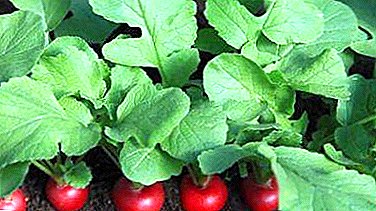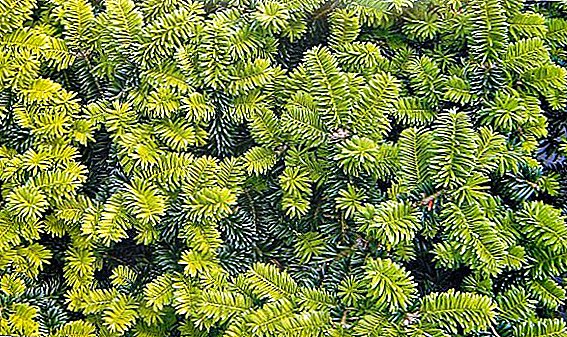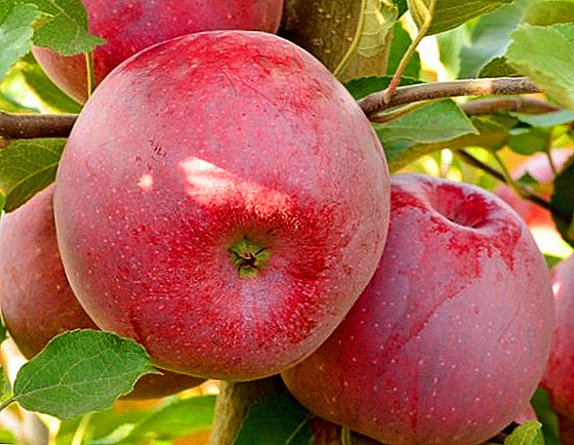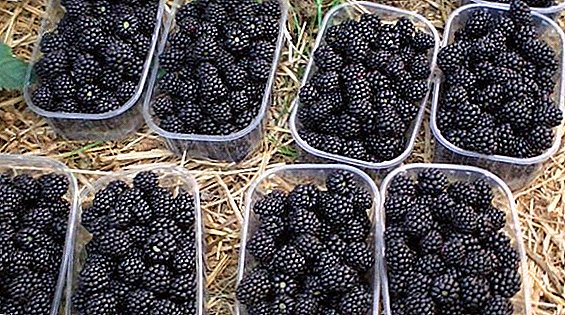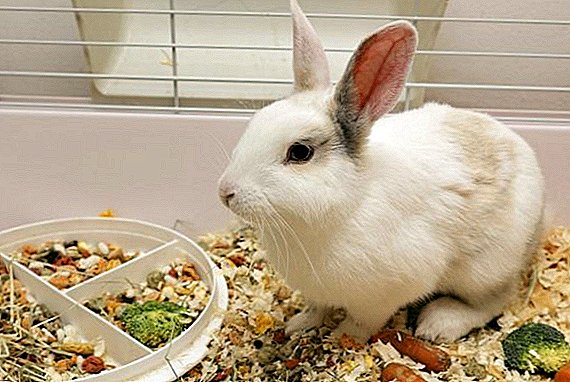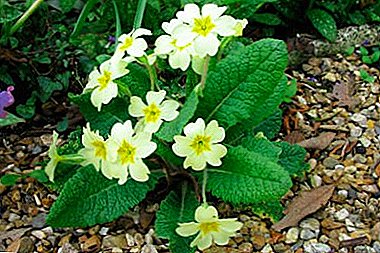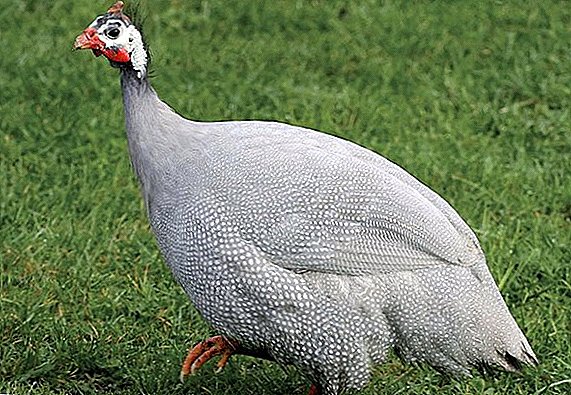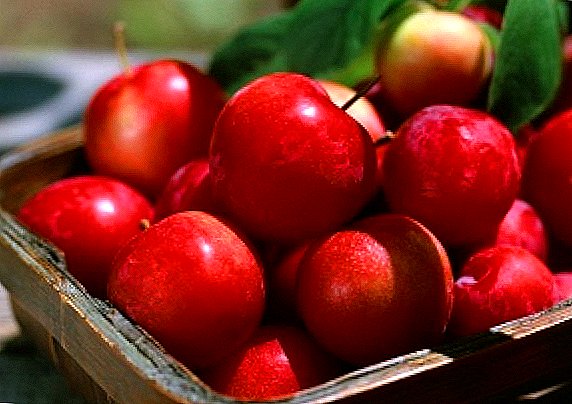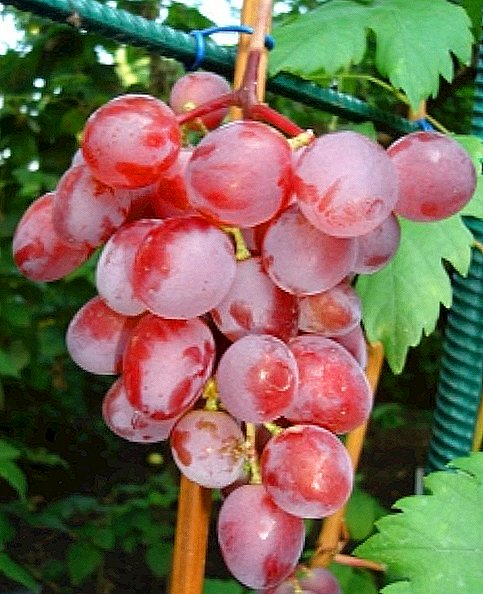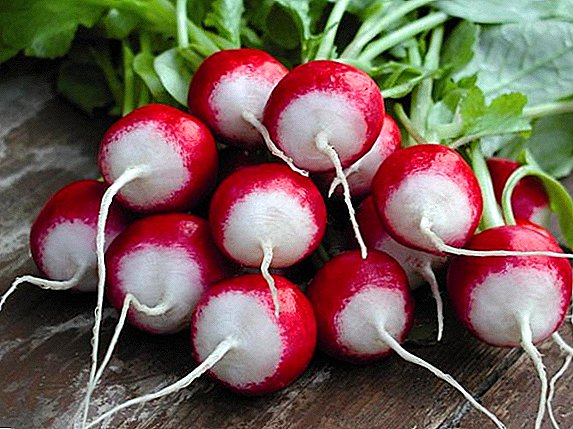 Radish refers to early early ripening vegetables - its ripening period is 20-40 days. Some gardeners have time for the season to collect two or three crops of this crop. Radish is rarely affected by parasites and diseases, but it still happens. This information will help you in time to pay attention to the problems in your beds and save the radish from pests.
Radish refers to early early ripening vegetables - its ripening period is 20-40 days. Some gardeners have time for the season to collect two or three crops of this crop. Radish is rarely affected by parasites and diseases, but it still happens. This information will help you in time to pay attention to the problems in your beds and save the radish from pests.
Did you know? Due to the high content of beneficial vitamins (A, B1, B2, B3, B6, E, C, P, PP), minerals (calcium, phosphorus, iron, potassium, magnesium) and phytoncids radish is able to restore the human immune system after a long winter.
Babanuha
 Babanukha, or cabbage (horseradish) leaf beetle, can be recognized by the small body (3-4 mm) of black, dark blue with green tint. Their larvae are dirty yellow, 5 mm long. This pest attacks all cabbage plants. Overwinters under post-harvest residues, in soil and manure. From wintering comes in the spring. At first it feeds on weeds, and then migrates to cultivated cabbage cultures. From this period, females begin to gnaw through holes in the leaf plates and lay eggs there. During the season several generations of beetles hatch.
Babanukha, or cabbage (horseradish) leaf beetle, can be recognized by the small body (3-4 mm) of black, dark blue with green tint. Their larvae are dirty yellow, 5 mm long. This pest attacks all cabbage plants. Overwinters under post-harvest residues, in soil and manure. From wintering comes in the spring. At first it feeds on weeds, and then migrates to cultivated cabbage cultures. From this period, females begin to gnaw through holes in the leaf plates and lay eggs there. During the season several generations of beetles hatch.
Control measures. To prevent the invasion of this parasite, it is necessary first of all to fight weeds in order to deprive them of their original source of food. In order to prevent the wintering of the larvae, the post-harvest remains are removed and destroyed. They dig up the earth so that the beetles die of cold.
With mass distribution, babanuhi use insecticides allowed for radish treatment - “Aktellik” and others.
Cruciferous flea
 Perhaps the most common and dangerous pest of radish is cruciferous flea. This is a small (2-3 mm) insect of a dark color (blue, black, green) with a metallic luster, which quickly jumps from plant to plant. Harmful to the leaves of radish, eating holes in them. Able to damage the leaf plate, which violates the process of photosynthesis. As a result, the plant stops growing and may even die. Especially dangerous is the flea for young radish in the first two weeks after germination, as it is able to completely destroy them. A favorable period for the attacks of this pest is a dry hot summer.
Perhaps the most common and dangerous pest of radish is cruciferous flea. This is a small (2-3 mm) insect of a dark color (blue, black, green) with a metallic luster, which quickly jumps from plant to plant. Harmful to the leaves of radish, eating holes in them. Able to damage the leaf plate, which violates the process of photosynthesis. As a result, the plant stops growing and may even die. Especially dangerous is the flea for young radish in the first two weeks after germination, as it is able to completely destroy them. A favorable period for the attacks of this pest is a dry hot summer.
Larvae overwinter in plant debris, soil. With the arrival of spring, they first settle on weedy plants belonging to the cabbage family, and when the cruciferous cultivates sprout, they migrate massively to them. Eggs are laid in the soil at the beginning and in the middle of summer. During the season one generation of cabbage flea develops.
Control measures. For the prevention of damage to the flea bed garden radish fertilized with slurry. You should also time to destroy weeds and carry out a thorough autumn harvesting and digging the garden. In the process of growing a plant, it is necessary, if possible, to feed it, more often loosen the ground under it and water it. All this will accelerate the growth of radish, and for a strong and well-developed plant a strong threat of a flea will no longer be present. Also in hot weather, radish seedlings are covered with burdock leaves and fir branches.  Before splashing radish from insecticide fleas, you can try sparing folk methods. So, against this pest apply treatment with a solution of wood ash. It is prepared from 2 glasses of fresh ash, 50 g of grated household soap (1 tbsp. Spoons of liquid soap), diluted in 10 liters of water. The solution is left overnight, and early in the morning (up to six hours), when the flea has not yet gone out to fish, they process the leaves. Pre-infusion must be filtered. Also, the solution is used immediately after watering.
Before splashing radish from insecticide fleas, you can try sparing folk methods. So, against this pest apply treatment with a solution of wood ash. It is prepared from 2 glasses of fresh ash, 50 g of grated household soap (1 tbsp. Spoons of liquid soap), diluted in 10 liters of water. The solution is left overnight, and early in the morning (up to six hours), when the flea has not yet gone out to fish, they process the leaves. Pre-infusion must be filtered. Also, the solution is used immediately after watering.
You can just scatter the wood ashes in the garden. This procedure is carried out two or three times with an interval of four to five days. In the same way, radishes are treated with tobacco dust, ash, tansy powder (1 matchbox / 1 sq. M), celandine. Scare flea and infusions of garlic, tomato tops. After watering or raining data processing means need to be repeated.
Important! When processing radish folk remedies must be transferred to drip irrigation. Otherwise, the solutions will be washed off and do not have the desired effect.
Some gardeners shelter beds with agrospan, a white non-woven fabric, not strongly affected by young shoots. Or place crops under plastic bottles. It helps to stop the spread of flea for a while. Once the seedlings are strong, they must be opened and treated with a solution of ash.
Apply and sticky traps. For this purpose, for example, near the plants, fabric, plywood or paper flags are placed, smeared with a non-drying tracked glue. In the process of moving fleas stick to the sticky surface.
In that case, if biological methods do not help and there is a great risk of yield loss, resort to the use of insecticidal preparations from cruciferous flea. Inta-Vir, Aktellik, Fufanon will help to overcome it. Processing carried out only in the early stages of development of radish.
Important! The use of insecticides for the treatment of radish is an extreme necessary measure, when other methods in the fight against pest were powerless. Spraying is carried out no later than 20 days before harvesting.
Whitefish (white volnushka)
 The white butterfly is a white butterfly with dark tips of its wings. Has a length of 20-25 mm, wingspan - 40-50 mm. The butterfly itself does not harm the vegetable. But its larvae belong to the leaf-eating pests of radish. They eat leaves from the edges or gnaw through holes, which cause serious damage to the plant. The caterpillars of the white volushka green with light stripes reach a length of 30-40 mm. After departure in March-May, butterflies moths lay their eggs on the leaves of cabbage plants. For a season 1-5 generations can develop.
The white butterfly is a white butterfly with dark tips of its wings. Has a length of 20-25 mm, wingspan - 40-50 mm. The butterfly itself does not harm the vegetable. But its larvae belong to the leaf-eating pests of radish. They eat leaves from the edges or gnaw through holes, which cause serious damage to the plant. The caterpillars of the white volushka green with light stripes reach a length of 30-40 mm. After departure in March-May, butterflies moths lay their eggs on the leaves of cabbage plants. For a season 1-5 generations can develop.
Control measures. The main measures to combat these radish pests are:
- crop rotation;
- early sowing;
- destruction of cruciferous weeds;
- collecting the tracks manually;
- spraying with a solution of salt, mustard and ground pepper (2 tablespoons of mustard, 2 tablespoons of salt, 1 tsp. red or black pepper / 10 liters of water);
- treatment with biological and chemical preparations (in case of mass lesions).
The number of pests can be reduced by planting dill, carrots, onions and fennel next to radishes. These plants are capable of attracting insects from the natural enemies of the moth.
Spring Cabbage Fly
 The larvae of the small pest of the spring cabbage fly affect the roots and stalks, gnawing at them. The fly has a body 6 mm long, gray in color with transparent wings. The larvae are white, 8 mm long. Egg laying is done in the soil. The wintering of the pupa of the fly also occurs there. During the season two generations hatch, the most dangerous of which is the first for vegetable crops. Plants that damage these parasites are stunted, wither and often die.
The larvae of the small pest of the spring cabbage fly affect the roots and stalks, gnawing at them. The fly has a body 6 mm long, gray in color with transparent wings. The larvae are white, 8 mm long. Egg laying is done in the soil. The wintering of the pupa of the fly also occurs there. During the season two generations hatch, the most dangerous of which is the first for vegetable crops. Plants that damage these parasites are stunted, wither and often die.
Control measures. You can scare away a cabbage fly by sprinkling the beds and plants at the base of the stem with tobacco dust. You can use a mixture of tobacco dust with slaked lime or ash (1: 1). The treatment is carried out every week. Also, the pest can frighten the planting in close proximity to celery radish.
It is important to follow the rules of agricultural engineering: in particular, to loosen the soil after irrigation and rain, fertilizing, weed control. In order not to give a chance to the pupae of the fly to survive in the winter period, it is necessary to carry out a deep digging of land in the garden in late autumn. Recommended early sowing of radish.
Did you know? Not only the radish root crop is eaten, but also the leaves. They are used to make salads and soups.
Cruciferous bug
 Often, gardeners have to contend with such a pest as a cruciferous bug. It is this sucking insect that causes the radish leaves to turn yellow, and subsequently wither and die. The bedbug sucks the juice from the leaves. Winter spends under fallen leaves and plant debris. Control measures. With the invasion of the cruciferous bug, spraying infusions of dope or henbane will help. They are prepared in this way: a pound of dry flowering leaves is poured with a bucket of water, infused for 12 hours. Before use, they mix 30-40 g of soap. Chemical treatment is undesirable. In extreme cases, use "Actellic" or other drugs.
Often, gardeners have to contend with such a pest as a cruciferous bug. It is this sucking insect that causes the radish leaves to turn yellow, and subsequently wither and die. The bedbug sucks the juice from the leaves. Winter spends under fallen leaves and plant debris. Control measures. With the invasion of the cruciferous bug, spraying infusions of dope or henbane will help. They are prepared in this way: a pound of dry flowering leaves is poured with a bucket of water, infused for 12 hours. Before use, they mix 30-40 g of soap. Chemical treatment is undesirable. In extreme cases, use "Actellic" or other drugs.
Cabbage Mole
 Cabbage moth - moth gray-brown patronizing color. Its dimensions with wingspan reach 14-18 mm. Departure of the butterfly falls on May. She lays eggs on the bottom of the leaf plate. After a week, green caterpillars about 1 cm long appear from them. They feed on the pulp of radish leaves.
Cabbage moth - moth gray-brown patronizing color. Its dimensions with wingspan reach 14-18 mm. Departure of the butterfly falls on May. She lays eggs on the bottom of the leaf plate. After a week, green caterpillars about 1 cm long appear from them. They feed on the pulp of radish leaves.
Control measures. First of all, it is necessary to scare away butterflies in order to prevent them from laying eggs. This will help spraying tobacco solution (200 g of dried leaves of tobacco / 10 liters of boiling water), a decoction of citrus, lavender.
Do not neglect the destruction of weeds, because they often become breeding grounds for parasites. Since the pupae of the butterflies die at +4 ° C, it is necessary to dig the soil deep before the cold so that they are on the surface.
Fertilizers superphosphate with calcium chloride have proven themselves well. If necessary, and the massive destruction of plants (more than 10%) use biological and chemical preparations. However, it should be remembered that during the ripening of fruits the sprinkling of radish with such means is prohibited.
Cabbage Mace
 The caterpillars of the moth cabbage moth feed on radish leaves and other cruciferous ones. Its malicious activity carried out during the month. Hibernate in the soil. It is easy to learn ognevka - it is dark yellow with dark spots on the front wings. At wingspan reaches the size of 2.5 cm. Eggs lay on the underside of the leaves. Its caterpillars are yellow with light stripes on the sides. Control measures. It is possible to fight with a fire pit, attracting it with a bright light, and then catching it. It is necessary to destroy the weeds. Produce autumn digging land. Radish is better to sow before the departure of the butterfly.
The caterpillars of the moth cabbage moth feed on radish leaves and other cruciferous ones. Its malicious activity carried out during the month. Hibernate in the soil. It is easy to learn ognevka - it is dark yellow with dark spots on the front wings. At wingspan reaches the size of 2.5 cm. Eggs lay on the underside of the leaves. Its caterpillars are yellow with light stripes on the sides. Control measures. It is possible to fight with a fire pit, attracting it with a bright light, and then catching it. It is necessary to destroy the weeds. Produce autumn digging land. Radish is better to sow before the departure of the butterfly.
At insignificant damage to the eggs and caterpillars, it is necessary to destroy them mechanically. You can use foliar and root dressings with potassium and phosphorus. When overcoming the threshold of harmfulness in 10%, the use of insecticides is recommended ("Lepidotsid", "Bicol", "Fytoverm", "Agravertin", etc.).
Rape Sawfly
 The rape sawfly is able to completely gnaw the leaves of the radish, leaving only the veining. It also damages the buds and young shoots. Thus it prevents the fruit from sticking and provokes the death of the crop. Control measures. It is necessary to follow the agrotechnical rules for the care of vegetables: loosening the soil, eliminating weeds, respecting crop rotation, getting rid of plant debris.
The rape sawfly is able to completely gnaw the leaves of the radish, leaving only the veining. It also damages the buds and young shoots. Thus it prevents the fruit from sticking and provokes the death of the crop. Control measures. It is necessary to follow the agrotechnical rules for the care of vegetables: loosening the soil, eliminating weeds, respecting crop rotation, getting rid of plant debris.
From folk remedies for the fight against rape sawing, black henbane tincture is used: a pound of dried leaves are drawn in a small amount of water. After 12 hours, the infusion is filtered and adjusted to a volume of 10 liters. Before use, they mix 30-40 g of soap.
You can also try processing a decoction of tomatoes. When observing 3-5 individuals of the rape sawfly on one plant, it is necessary to resort to spraying with insecticides. It is better to do this with biological preparations of the type “Lepidocide”, “Entobacterin”, etc.
Rapeseed flower eater
 The rapeseed flower beetle has a black body with a blue tint and brown paws. Appears in early spring on flowering herbaceous plants. Then it migrates to other cultures during the period of their budding. It feeds on the insides of buds and flowers (stamens, pistils), and pollen. The egg-laying is carried out in buds. After 10 days, the flowers begin to eat the larvae. Control measures. In the first place among the methods of dealing with the color beetle are agrotechnical procedures and the mechanical method. If they are ineffective, apply insecticides.
The rapeseed flower beetle has a black body with a blue tint and brown paws. Appears in early spring on flowering herbaceous plants. Then it migrates to other cultures during the period of their budding. It feeds on the insides of buds and flowers (stamens, pistils), and pollen. The egg-laying is carried out in buds. After 10 days, the flowers begin to eat the larvae. Control measures. In the first place among the methods of dealing with the color beetle are agrotechnical procedures and the mechanical method. If they are ineffective, apply insecticides.
Unfortunately, the cultivation of radish is sometimes fraught with difficulties in controlling pests and diseases. In order to prevent the invasion of parasites on radishes, it is necessary to take preventive measures. First of all, follow the rules of its crop rotation - this vegetable should not be planted after any crops belonging to the cruciferous family (cabbage, turnip, rutabaga, etc.). Secondly, you should not sow radishes annually in the same area, it is better to return it to the same place not earlier than in three years.
It is also not recommended to plant radishes in close proximity to related cruciferous crops. Early sowing of vegetables will help to avoid pest attacks, since the massive spread of harmful insects falls on dry and hot weather. As you can see, although the pests of radish are numerous, but a variety of measures to control them and adhere to agricultural technology completely allow to grow a good crop.


